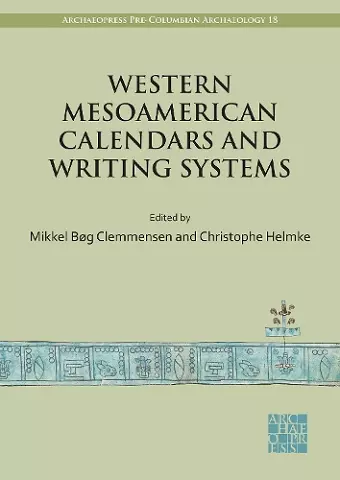Western Mesoamerican Calendars and Writing Systems
Proceedings of the Copenhagen Roundtable
Christophe Helmke editor Mikkel Bøg Clemmensen editor
Format:Paperback
Publisher:Archaeopress
Published:8th Jun '23
Currently unavailable, our supplier has not provided us a restock date

Western Mesoamerican Calendars and Writing Systems draws together studies by some of the world’s leading experts presented at a conference held in December 2020, ‘The Origins and Developments of Central Mexican Calendars and Writing Systems’. Mesoamerica is one of the few places to witness the independent invention of writing. From the earliest attestations of this intellectual feat in the Late Preclassic period (c. 900 bc-ad 150), writing spread throughout Mesoamerica, developing and diversifying into a series of distinct and independent scripts. With the exception of the celebrated phonetic decipherments of Maya and Aztec writing, which are now well-documented and can be fully read, most Mesoamerican writing systems remain little studied and undeciphered. This is particularly true of the writing systems of Western Mesoamerica, the topic of this volume.
Bringing together new research on Western Mesoamerican writing systems, some contributions focus on specific features of a given writing system, whereas others offer state-of-the-art syntheses of whole writing systems. Two contributions focus on the calendar in particular, and associated notations, as integral parts of writing systems. Chapters are included on the writing system of Teotihuacan, the Ñuiñe writing of the Mixteca Baja and adjoining areas, the writing system of the Epiclassic period and Aztec writing of the Postclassic. These writing systems represent more than a millennium of written records and literacy in Mesoamerica, spanning from the Early Classic to the Late Postclassic (from the 2nd to the sixteenth centuries ad). Aztec writing even continued in use for several decades after the Spanish invasion of Mexico (ad 1519-1521), which saw the introduction of the Latin alphabet and the gradual obsolescence of Mesoamerican logophonetic writing systems.
‘The present volume cannot address all of these issues, but it does make a first break toward a better understanding of these structurally similar writing systems. The scripts of western Mesoamerica are of great importance for the study of writing systems in general, precisely because of their distinctive interplay between script and image, lack of linearity, and flexibility in the arrangement of hieroglyphic signs. In this respect, the volume is also highly recommended reading for scholars concerned with the evolution and structure of writing systems from a theoretical and comparative perspective.’ – Nikolai Grube (2023): Antiquity Vol. 97
ISBN: 9781803274850
Dimensions: 290mm x 205mm x 8mm
Weight: 690g
190 pages